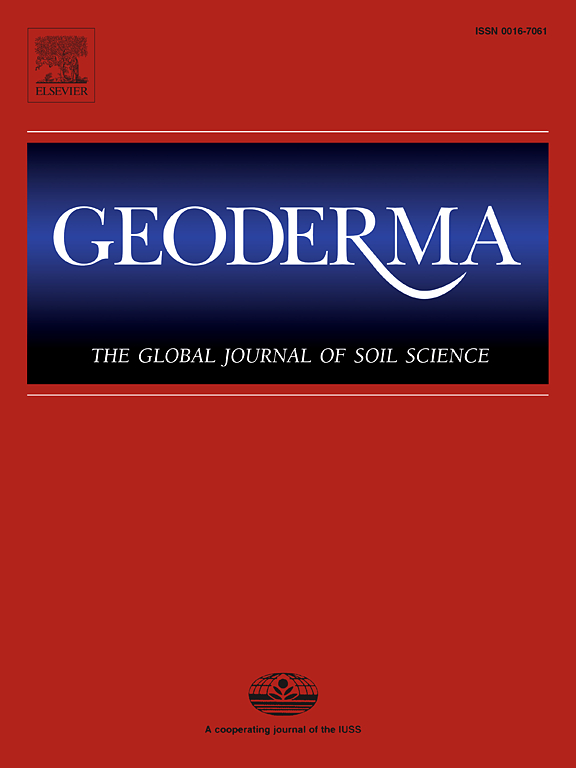Quantifying spatial and vertical variations in soil C:N relationships in permafrost-affected landscapes
IF 6.6
1区 农林科学
Q1 SOIL SCIENCE
引用次数: 0
Abstract
Permafrost regions are experiencing rapid changes that affect carbon (C) and nitrogen (N) cycles, with implications for vegetation dynamics and gas exchanges with the atmosphere. Soil C:N ratio is a key indicator of organic matter quality, yet spatial estimates of N stocks and C:N ratios lag behind those for C. We used quantile regression forests to compare direct and indirect digital soil mapping approaches for predicting soil C:N ratios at 0–30, 30–60, and 60–100 cm depths across a latitudinal transect in Alaska. The indirect approach – deriving C:N from separately predicted C and N stocks – outperformed direct mapping for the surface layer (0–30 cm), while direct mapping was marginally better at greater depths. However, prediction accuracy decreased with depth for both methods. Temperature and topography were the most important predictors. Both approaches overestimated low and underestimated high C:N ratios, with direct mapping showing greater bias. Our results underscore the challenges of modeling C:N ratios in heterogeneous, data-sparse permafrost soils, but also suggest that indirect mapping holds promise if supported by more extensive datasets.
冻土影响景观中土壤C:N关系的空间和垂直变化
多年冻土区正在经历影响碳(C)和氮(N)循环的快速变化,对植被动态和与大气的气体交换产生影响。土壤C:N比率是有机质质量的关键指标,但对N储量和C:N比率的空间估计滞后于对C的估计。我们使用分位数回归森林比较了直接和间接数字土壤制图方法,用于预测阿拉斯加纬向样带0 - 30cm、30 - 60cm和60 - 100cm深度的土壤C:N比率。间接方法-分别从预测的C和N储量中得出C:N -在表层(0-30 cm)优于直接测绘,而直接测绘在更深的深度略好。然而,两种方法的预测精度都随深度的增加而降低。温度和地形是最重要的预测因子。两种方法都高估了低碳氮比,低估了高碳氮比,直接映射显示出更大的偏差。我们的研究结果强调了在非均匀的、数据稀疏的永久冻土中建立C:N比模型的挑战,但也表明,如果有更广泛的数据集支持,间接制图是有希望的。
本文章由计算机程序翻译,如有差异,请以英文原文为准。
求助全文
约1分钟内获得全文
求助全文
来源期刊

Geoderma
农林科学-土壤科学
CiteScore
11.80
自引率
6.60%
发文量
597
审稿时长
58 days
期刊介绍:
Geoderma - the global journal of soil science - welcomes authors, readers and soil research from all parts of the world, encourages worldwide soil studies, and embraces all aspects of soil science and its associated pedagogy. The journal particularly welcomes interdisciplinary work focusing on dynamic soil processes and functions across space and time.
 求助内容:
求助内容: 应助结果提醒方式:
应助结果提醒方式:


